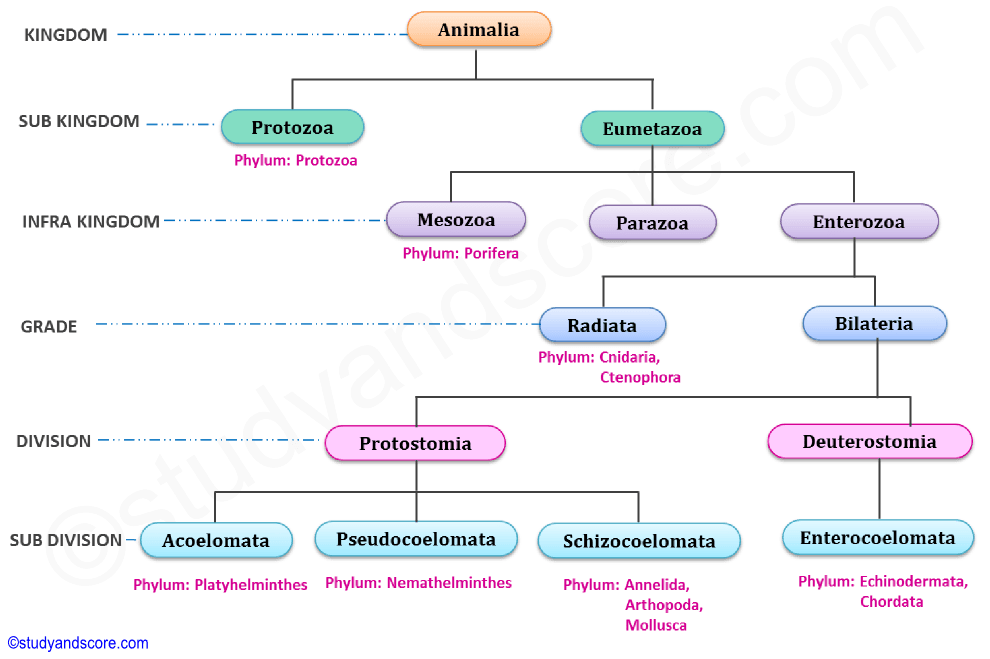On the planet Earth, there is a great diversity amongst living organisms. All the organisms vary in their external as well as internal structure, habit (eating, dwelling etc.), habitat (place of living), mode of nutrition (type of food they eat), and physiology. The Biodiversity of the earth is enormous. Currently Earth is believed to have over 40 million species of organisms, but only about 1.7 million have actually been described so far. All these living organisms share a great deal of diversity and also similarity, and we must classify them into groups in order to understand and study them systematically.
Taxonomy and systematics are the two main branches of biology which deal with classification.
A grocery shop owner must take due care in arranging different items in different boxes or bags so that when a customer visits him he must be able to fulfill his need. If the items are not kept in a systematic way, it will be impossible for the shop owner to find the required item out of the loads and loads of items he has in his shop. In similar manner, in spite of great diversity among the animals of the animal kingdom is well arranged in a systematic way.
Classification makes the study of the biodiversity easier as the characters of a particular group or a family would apply to all the individuals of that group. Classification allows us to understand diversity better. For systematic study of animals different animals are arranged into minor and major groups on the basis of similarities and the differences in the characters.
Body structures or body plans form an important base for the characterization and classification of animals. Body plan is also referred to as bauplan in the German language.
Body plan 1: Number of primary germ layers in the embryo
Based on the number of primary germ layers in the embryo, the animals can be divided into two types, namely diploblastic and triploblastic.
Animals form layers of cells during their development from a single-celled zygote stage to multicellular adult. The embryo of the diploblastic animals has two cell layers, an outer ectoderm and an inner endoderm.
On the other hand the embryo of the triploblastic animals as an additional third layer called as the mesoderm between the ectoderm and the endoderm. This existence of the three layers differentiated protostomes and deuterostomes from simple animals that have evolved earlier.
Body plan 2: Division of labor
Based on the division of labor, animals are divided into three types namely, cellular grade of organization, tissue grade of organization, organ grade of organization.
When the specific body functions are performed by cells it is called as cellular grade of organization. When the specific body functions are performed by tissues it is called as tissue grade of organization. Finally when the specific functions are performed by the organs or organ systems it is called as organ grade or organ-system grade of organization.
Body plan 3: Body cavities
Animals can be grouped into three main categories based on the types of body cavity they have namely acoelomates, pseudocoelomates and coelomates.
Acoelomates are the animals which lack the body cavity or coelom. The space between the gut and body wall is filled by mesenchyme tissue. Example of acoelomates is phylum Platyhelminthes. On the other hand pseudocoelomates are animals with pseudocoelom which is not lined by peritoneal layers. Example of pseudocoelomates is phylum Nemathelminthes. The pseudocoelom is a liquid filled space in which organs are suspended. Finally coelomates are the animals which develop a coelom within the mesoderm. The coelom is lined by peritoneum. Example of coelomates is all the animals from phylum Annelida to Chordata.
Body plan 4: Symmetry
Based on the symmetry, animals can be divided into two types namely, bilateral symmetry and radial symmetry.
Bilateral symmetry is always associated with cephalization. Cephalization is the presence of head bearing sensory organs and a central nervous tissue at the anterior end of the animals. Both the bilateral symmetry and cephalization are common in the animals that move freely. These are the animals that can only be cut in one plane to create a single mirror image. They have top (dorsal), bottom (ventral), head (anterior), tail (posterior), right, and left sides.
On the other hand radial symmetry is very much primitive to bilateral symmetry. These are the animals that can be divided multiple times through a central axis creating multiple mirror images. They have a top and a bottom but no left nor right, no head nor tail.
Body plan 5: Fate of blastopore
Based on the fate of blastopore, animals can be divided into two types namely, protostomes and Deuterostomes.
Protostomes in Greek means mouth first. They are the organisms in which the blastopore develops into mouth. Hence in these animals the mouth is formed first. Cleavages in protostomes are spiral and determinate type. In spiral cleavage, the cleavage planes are oblique to the polar axis of the zygote. In determinate cleavage, the fate of blastomeres is fixed early in the development.
On the other hand deuterostomes in Greek means mouth second. They are the organisms in which the blastopore develops into anus and the mouth is formed later. Cleavages in deuterostomes are radial and determinate. In radial cleavage, cleavage plans are at right angles to the polar axis of the zygote. In indeterminate cleavage, the fate of blastomeres is fixed later in the development.
Body plan 6: Gut
Based on the gut or digestive tract, the animals can be divided into two types namely, extracellular and intracellular.
The digestive tract enables the animals to digest food outside cells. This digestion is also called as extracellular digestion. In some animals which do not have a digestive tract, the food items are brought into the cell for digestion. This type of digestion inside the cell is termed as intracellular digestion.
Body plan 7: Circulation of blood
Based on the circulation of blood the animals can be divided into two types. Namely open type of circulation and closed types of circulation.
In open type of circulation the blood circulated in the open cavities called sinuses. On the other hand, the blood circulated only in the closed blood vessels in closed type of circulation.
The term Taxonomy was coined by Augustin Pyramus de Candolle. Taxonomy is the science of classification of organisms. Classification of organisms are done by Biologists based on evolutionary relationships and shared features among the organisms.The fundamental unit of life on Earth is refers to as the species. The species is a population or series of populations whose members are able to interbreed freely under natural conditions and who do not breed with other species.
Closely related species are combined into a genus, while closely related genera form a family, and so on up the classification hierarchy. The genus and species names are always either italicized or underlined, with the genus name capitalized and the species name given in lower case. Species are grouped into more inclusive taxa, which are grouped into larger taxa so that the classification is a hierarchy of a system of units that increase in inclusiveness from each level to the next higher level.
The following are seven main categories used in any plan of classification. They are known as the supra-specific groups.
1. Kingdom
2. Phylum
3. Class
4. Order
5. Family
6. Genus
7. Species
Under the category species we have other groups termed as infra specific groups. The following is the list of infra specific groups
1. Species
2. Subspecies
3. Clines
4. Demes
Traditionally, invertebrate phyla are divided into major and minor phyla depending on the following two factors:
Factor 1: Number if species and individuals in the phyla
Factor 2: Participation of species or individuals in ecological communities
Based on the Factor 1, there are 11 phyla seem to be major phyla whereas minor phyla make up only a small fraction of animal communities. The 11 phyla included as the major phyla are Protozoa, Porifera, Coelenterata, Platyhelminthes, Rotifera, Nematoda, Mollusca, Annelida, Arthropoda, Ectoprocta and Echinodermata.
Based on the Factor 2, the phyla which represent in great majority of ecological communities are regarded as the major phyla. On this basis the two phyla (Rotifera and Ectoprocta) included in major phyla as per Factor 1 cannot be considered major. Though they are greater in number they are included in the minor phyla as their participation in the ecological communities is limited.
Hence finally by using both the factors only 9 phyla (Protozoa, Porifera, Coelenterata, Platyhelminthes, Nematoda, Mollusca, Annelida, Arthropoda and Echinodermata) can be regarded as the major phyla and all the rest are considered to be minor phyla.

Kingdom Animalia is divided into two subkingdoms based on the organization of the cells and tissues.
Protozoa: These are unicellular animals. The only phylum included in this group is Phylum Protozoa.
Eumetazoa: It is also called as Metazoa. These are multicellular animals with well-defined tissues in the body. This sub kingdom includes three infra kingdoms namely, Mesozoa, Parazoa and Enterozoa.
Mesozoa: This infra kingdom includes the animals from the phyla Porifera.
Parazoa: This infra kingdom includes sponges separated from rest of the metazoans. The sponges have tissue grade of organization. Body organs, nervous tissue, cellular differentiation are absent in Parazoans. Cell specialization with cellular independence make them different from other metazoans. Parazoans lack a true mouth and possess peculiar collar cells and their digestion is intracellular.
Enterozoa: This infra kingdom includes two grades,
Radiata: It is also known as Diploblastic. These are Eumetazoans with primary radial symmetry and diploblastic body. The phylum Cnidaria is included into his grade.
Bilateria: It is also known as triploblastic. These are Eumetazoans with bilateral symmetry and triploblastic body. This includes two divisions.
Protostomia: These are Eumetazoans in which blastopore develops into mouth. In most Protostomes, cleavage pattern is spiral and determinate. This includes three sub divisions.
Acoelomata: These are Eumetazoans without body cavity or coelom. Phylum Platyhelminthes is included in this subdivision.
Pseudocoelomata: A body cavity is present between the body wall and the alimentary canal, but it is not a true coelom as it is not lined with peritoneal layers. Phylum Nemathelminthes is included in this subdivision.
Schizocoelomata: They have a true coelom, which is formed by the splitting of the mesoderm and it is also lined with peritoneal layer. Phyla Annelida, Arthropoda, Mollusca are included in this subdivision.
Deuterostomia: These are Eucoelomates in which anus is formed near the blastopore. Mouth is formed later away from the blastopore at the opposite end. In deuterostomes, cleavage pattern is radial and indeterminate. It includes only one subdivision, the Enterocoelomata.
Enterocoelomata: They have true coelom, which is an Enterocoel. It is formed from the archenteron. Phyla Echinodermata and Chordata are included in this Subdivision. Schizocoelomates and Enterocoelomates are together called as Eucoelomates.

- Share with your friends! -



Study Score on May 27, 2018 at 09:04 pm
You cannot download our material. Please do visit the site and make notes on the topics required by you. Also thank you for your comment.

Login to post your comment here...
- or with social Account -